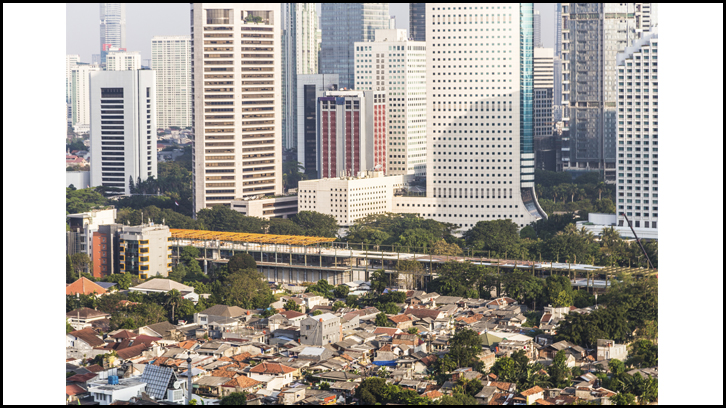What happens to inequality as cities grow?

In recent decades, most developing countries have been experiencing rapid population growth and significant migration from rural to urban areas. Consequently, cities have been growing at a rapid pace. Today, we can find large metropolitan areas all around the world, both in developed and developing countries, exceeding the 10 million inhabitants, or even the 20 or 30 million inhabitants. Along this growth in the average city size of countries, income inequality has also increased in many places, becoming a fundamental challenge in many societies. But how does the growth of cities influence the evolution of income inequality within countries?
In a recent paper published in the Journal of Regional Science, David Castells-Quintana from UAB explores the role of cities in the evolution of income inequality at country level — an issue which had been to date understudied.
The econometric analysis performed using panel data from 1960 to 2015 for 1,690 cities in 199 countries, suggests an interesting U-shaped relationship between average city size and inequality; inequality is expected first to fall and then to increase with average city size. Several mechanisms seem to explain this. As small cities grow inequality may fall as more people get access to basic services and employment opportunities in urban areas. However, as big cities continue to grow, large wage differentials arise, leading to increasing inequality. In fact, it is not uncommon to see in large cities of developing countries areas of great wealth next to slums crowed with people living in extreme poverty.
This U-shaped relationship between the size of cities and income inequality arises as surprising, as classical economics has usually suggested a different non-linear relationship between urbanization and inequality. According to classical theories, inequality is expected to first increase and the decline, in what is known as the Kuznets’ inverted U. However, as the recent analysis of data performed by Castells-Quintana shows, this inverted-U relationship does not tell us anything about the absolute size of cities. Beyond Kuznets’ hypothesis, there is a U-shaped relationship between average city size and inequality
Results mean that city grow may be desirable when cities are small, as inequality goes down. However, the continuous growth of large cities represents a worrying risk of increasing inequalities. All in all, the research performed suggests that medium-sized cities may be more desirable for less unequal and more cohesive societies.
Universitat Autònoma de Barcelona
References
Castells-Quintana, D. (2018). Beyond Kuznets: Inequality and the size and distribution of cities, Journal of Regional Science 58(3): 564-580.

